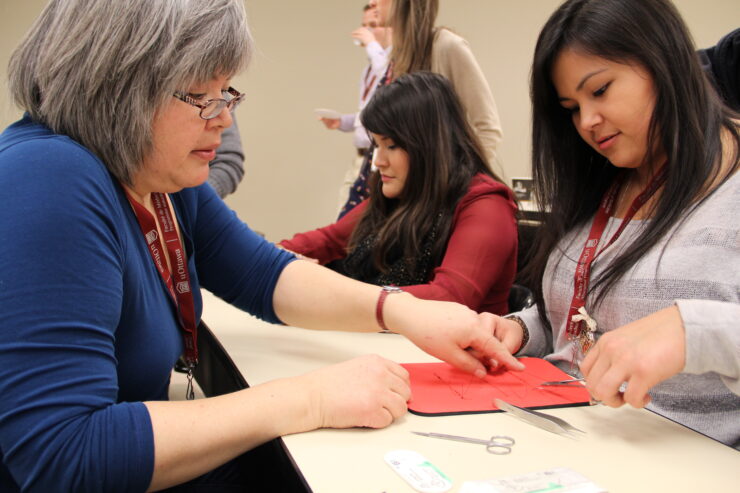With growing number of part-time professors comes slowing amount of university support
So, you want to be a professor? You’ve always been smart, hardworking. You find joy in studying your field of interest, whether it be literature, or engineering, or anthropology. Your grades are stellar. And so you think, why not get paid to study this for the rest of your life?
Your vision of a career in academia may be romanticized. You think back to the eccentric professors in movies from your childhood, the sombre intellectuals brooding in coming-of-age productions. You fall in love with a new professor’s teaching style each semester. You imagine a life of quiet offices with sweet-smelling books, the upward gaze of your students, research projects, published prestige. The title ‘Doctor’, you think, has quite the ring to it.
And perhaps you don’t even think about money — maybe it’s not about that for you. Maybe you imagine long, fulfilling days, thinking only tangentially of the place you will call home afterwards. You think of lively debates with your colleagues over a long dining table — never mind who the table belongs to. You think of worldwide conferences rather than a credit card with stockpiled air miles. You think of walking through the doors of a lecture hall, rather than the electric car you left parked outside.
Centering happiness over financial gain in your life’s plans is certainly brave. However, the question of money is an important one in deciding to pursue a professorship. This is because the images you may hold of this career, from the media, and even from the passing admiration of your own professors, obscure a harsh reality.
Since the 1970s, real wages in the field of academia in North America have been in steady decline. This is because of the increase in what is called part-time, or adjunct, professorship. According to a 1969 article in the Inside Scholar, the percentage of tenure-track professors in higher education institutions in America was roughly 78 per cent, as opposed to the 22 per cent of part-time instructors.
As of 2018, the percentages have reversed, with 75 per cent of university instructors in the US being off the tenure-track. The statistics in Canada are less clear because most universities do not report on the number of part-time instructors they employ. However, the publication University Affairs estimated that about 50 per cent of university instructors were part-time professors in 2014. In 2021, a report by the Council of Canadian Academies found that only 19 per cent of PhD graduates went on to hold tenure-track positions.
Now, you might be asking yourself: what does tenure-track mean, and how is that different from part-time professorship? The term “part-time” in this case is a misnomer. It does not refer to a lesser workload than full-time professors, but rather an equal or higher workload, with lesser pay.
Why is this?
The image that the casually-glancing public has of the professor, the distinguished fixture of university hallways, probably refers to tenured or tenure-track professors. To be tenured means to be guaranteed employment by the university until retirement, barring serious offense. This is the ultimate goal of a tenure-track professor. The career ladder begins with assistant professors, whose hard work in their teaching, administrative service, and published research raises them to the ranks of associate professors, then to full, tenured professors.
Conversely, part-time professors are not granted this pathway to promotion. Their positions at the university are based on time-limited contracts to teach a certain number of courses for a certain wage per course. Rather than the security of tenure, a part-time professor faces contingent employment. If certain courses are deemed too low in enrollment, or a given department begins to run low on funds, part-timers are subject to sudden layoffs.
This disparity between tenure-track and part-time professorship is absolutely reflected at the University of Ottawa. To understand this situation from the perspective of the individuals whom it affects, we spoke with two part-time professors, Dr. Jennifer Baker and Dr. Sean Moreland, both involved in the Association of Part-Time Professors of the University of Ottawa (APTPUO).
“It fluctuates from year to year, but roughly half of undergraduate courses at uOttawa are taught by APTPUO professors,” said Moreland.
The basic rate for teaching a three-credit course for the 2020-21 academic year was $8,585.
“I’m a regular part-time professor with the university,” said Moreland. “I have a full-time course-load, so I earn around $43,000 annually. This is roughly 40 per cent of what a tenure-track professor teaching the same course-load would make.”
“A living wage in Canada is now estimated to be about $60,000,” Dr. Baker added. “When you take into consideration things like emergencies, and putting away money for retirement…”
The wages are even lower in some institutions in the United States, where public education is less subsidized by the government. There have been articles about American part-time professors facing homelessness and bankruptcy due to their extremely low earnings. This is, of course, exacerbated by factors such as the social class of a professor’s family and their ability to give monetary support during rough patches, as well as a professor’s membership to a minority group that historically faces employment discrimination.
Because of this wage disparity with tenure-track professors, many part-timers may juggle their workload with side gigs, such as freelance writing contracts and retail and food service jobs. Some part-time professors are constantly on the academic job market seeking better employment opportunities, even being open to relocation.
Moreland, who has a wife and stepchild, says, “I’ve reconciled myself to making the best out of the situation at the U of O. If I was to move outside of the province for an opportunity, I might have to manage a long-distance situation, be less of a presence in my family’s life. It’s no longer something that is a viable course of action for me.”
Apart from relatively low wages, part-time professors also face problems such as a disparity in support and research funding as compared to their tenure-track peers, as well as unpaid labour.
“Before you teach a university course, you have to write the syllabus and select the learning materials,” said Baker. “It took me three weeks to prep for my courses this semester. This was all unpaid, but necessary. The same goes for office hours, which are crucial for teaching a good course. You have to interact with students, but the hours are unpaid, and you sometimes don’t even have access to a regular office.”
Unpaid labour also extends to the administrative duties and research work that part-time professors may participate in with the hopes of furthering their careers. While the salaries of tenure-track professors include funding for educational conferences, publishing research, and time spent sitting on administrative boards, this is not the case for part-timers. In fact, the APTPUO had to negotiate with the University of Ottawa to set up a fund for research grants for its members, the Academic and Professional Development Fund.
COVID-19 added a new layer of challenges to part-time professors at the University of Ottawa. Because of their fixed, per-course wages, part-time professors are not compensated for their purchase of technology to enable efficient online teaching, such as high-speed computers, headsets, and internet packages.
Additionally, the move to virtual classes has removed the size constraints of a physical class. Moreland says many university administrations have used this as an opportunity to greatly expand enrollment numbers.
“This is a huge problem in the arts and humanities,” he said. “We see this mostly in lower-level undergraduate classes, such as ENG1100, which are almost exclusively taught by adjunct professors. If you are teaching writing skills, the students improve through continuous feedback after assignments. And if the university is foisting more and more students onto fewer and fewer professors, it inevitably corrodes the quality of education a professor is able to provide. And this is disproportionately a problem for part-time professors.”
Well, this is a grim picture, you’re thinking. You may be wondering why they don’t just quit. Are part-time professors to be painted as these immobile victims unable to change fields to their own advantage? Certainly not. Part-time professors are well aware of the earning power of graduate degrees in certain fields. However, as in the case of Moreland and Baker, a genuine love of academia and of teaching may incentivize them to stay put.
“You know, I could go into the private sector with my PhD,” said Baker. “But my work fulfills me. My advice to young students is — and this may sound naïve — is to find something fulfilling. No one has to put up with conditions that are exploitative. But you can work around the way the world is, try to find a way to live your version of a happy life while making some sacrifices.”
“I love language. And I love literature. I love the teaching of these subjects,” said Moreland. “I realized this in graduate school when I was a teaching assistant. Certainly, this is not the image I’d held of professorship. By the end of my doctorate, I was beginning to understand that this was an endemic situation.”
“You know, I had colleagues who were still surviving on part-time work years after getting their PhDs. Despite this, I do enjoy my work. The principle of teaching itself has kept me coming back to this. And I will keep pushing for better working conditions through the APTPUO.”
Correction: This article was edited to remove details regarding course loads to provide clarity.





